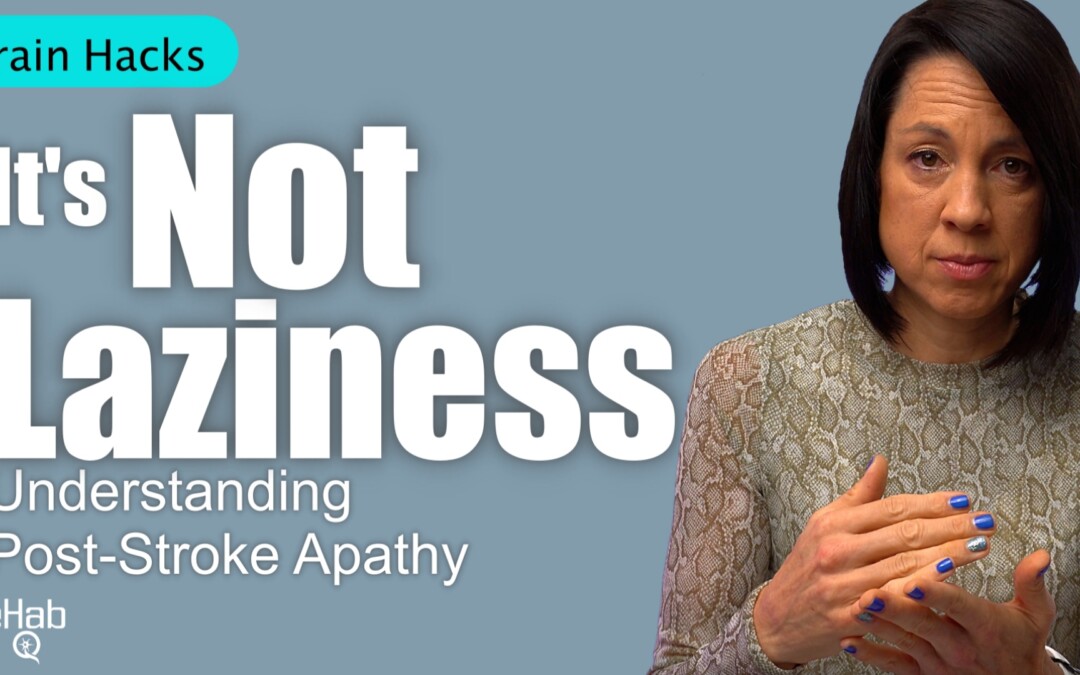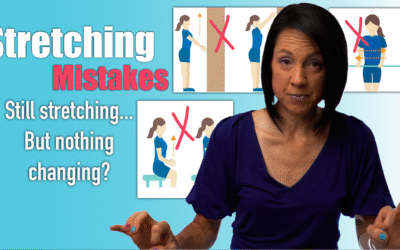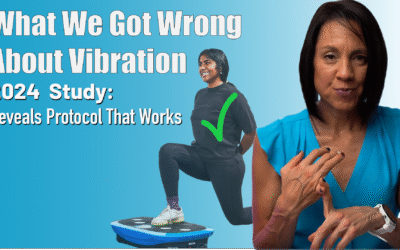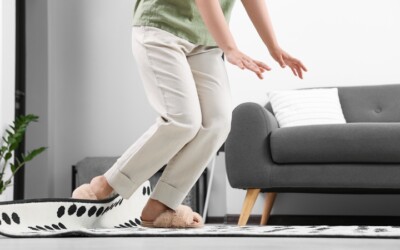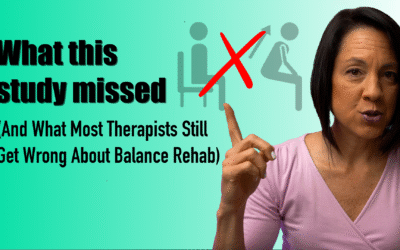What’s Really Going On When Motivation Disappears After Stroke
Recovering from a stroke is a journey that requires strength, patience, and persistence. But for many stroke survivors, the hardest part isn’t weakness, fatigue, or memory loss. It’s something less visible yet deeply impactful: apathy.
If you’ve noticed that you or your loved one has lost motivation, seems disconnected from recovery, or struggles to start activities even when they want to, it could be post-stroke apathy. This condition is far more common than most people realize, yet it often goes undiagnosed and untreated.
Recovering from a stroke is a journey that requires strength, patience, and persistence. But for many stroke survivors, the hardest part isn’t weakness, fatigue, or memory loss, it’s something less visible yet deeply impactful: apathy.
If you’ve noticed that you or your loved one has lost motivation, seems disconnected from recovery, or struggles to start activities even when they want to, it could be post-stroke apathy. This condition is far more common than most people realize, yet it often goes undiagnosed and untreated.
What Is Post-Stroke Apathy?
Post-stroke apathy is a neurological condition characterized by a lack of motivation or drive to act. It’s not the same as being lazy, unmotivated, or disinterested, it’s a symptom of changes in the brain caused by the stroke itself.
A person with apathy may understand what needs to be done and even want to participate, but they find it extremely difficult to initiate action. For caregivers and family members, this can be confusing and frustrating. It’s important to remember that this isn’t a choice or a personality change. It’s a direct result of brain injury.
What the Research Says
Research suggests that approximately one in three stroke survivors experiences some degree of apathy during recovery. While studies have shown mixed findings on whether apathy is more common after right or left hemisphere strokes, clinical experience points strongly toward those with right hemisphere involvement.
Unfortunately, individuals who experience apathy tend to have poorer long-term outcomes, not because they are less capable of recovery, but because apathy is rarely identified or addressed in therapy. When the drive to act is gone, rehabilitation participation naturally decreases, and without intervention, this can stall progress.
Why Post-Stroke Apathy Happens
Apathy develops when certain regions of the brain responsible for motivation, initiation, and emotional drive are affected by the stroke. These include the frontal lobe, basal ganglia & internal capsule, thalamus, and white matter pathways.
The frontal lobe is responsible for initiation and goal-directed behavior, while the basal ganglia and internal capsule help regulate dopamine. This is a neurotransmitter that fuels our “drive”. The thalamus acts as a relay center between thinking and emotion, and damage here can disrupt the connection between intention and emotional engagement.
White matter changes, often caused by small or repeated strokes, can gradually diminish the brain’s ability to initiate actions. These subtle changes are sometimes misdiagnosed as depression, especially when motivation decreases slowly over time.
The Challenge of Recognition
Apathy is frequently mistaken for depression, but the two are distinct conditions. Depression involves sadness, hopelessness, or emotional pain, whereas apathy is marked by emotional flatness and a lack of drive. A person with apathy may not feel sad. They simply struggle to begin or sustain activity.
One of the reasons post-stroke apathy is often overlooked is anosognosia, a condition where individuals are unaware of their own limitations. This can make it difficult for them to recognize that they need help or to understand the extent of their condition.
Because of this, caregivers play an essential role in noticing changes and communicating them to healthcare professionals. From there, the clinician’s task is to differentiate between depression and apathy to ensure the right interventions are provided.
Signs of Post-Stroke Apathy
You might notice:
- Needing constant reminders to start tasks
- Acting only when told
- Feeling emotionally “flat”
- Losing interest halfway through activities
- Saying “I know I should” but never starting
If these behaviors last more than a few weeks, it might be time to talk to your healthcare provider.
What Helps Rebuild Motivation
The good news? Apathy can improve with the right strategies. The brain can relearn how to initiate and engage, but it takes structure, consistency, and patience.
1. Use a Timer
Start small. Set a 20-minute timer for your therapy or task. Knowing there’s a clear start and end makes it less overwhelming and helps your brain “activate.”
2. Keep a Daily Checklist
Write down 3 simple tasks each morning, like “stretch for 5 minutes” or “walk to the mailbox.”
Checking things off gives your brain a dopamine boost and helps rebuild drive.
3. Keep Things Simple
Focus on one therapy activity per day and be consistent. After a month, you can gradually add another activity. Small, steady progress helps the brain re-engage without feeling overwhelmed.
4. Focus on the Basics
Sleep, nutrition, mindfulness, and gentle movement all improve attention and energy. Think of them as the foundation for rebuilding motivation.
5. Caregivers: Keep Prompts Simple
If you’re supporting someone with apathy, be patient. Give clear, calm prompts and avoid nagging, it’s not that they don’t care, their brain just needs more cues to act.
6. Emerging Approaches
-
Repetitive Transcranial Magnetic Stimulation (rTMS): Early research shows promise in enhancing motivation by targeting neural pathways.
-
Dopaminergic medications: Can be beneficial under medical supervision,. Stimulants such as amphetamines are generally not recommended after stroke.
Final Thoughts
Post-stroke apathy is not a sign of laziness. It’s a neurological condition that deserves understanding and proper care. Recognizing it early, involving caregivers, and working with professionals who understand its root causes can greatly improve recovery outcomes.
If you or a loved one is struggling with motivation after a stroke, know that it’s not about willpower, it’s about healing. The more we understand how the brain works, the better we can support its remarkable ability to recover.
So, if motivation feels hard right now, don’t wait for it to return, start anyway, even for one minute. Action itself can reawaken drive and help your brain heal.
And if you’d like help building a plan that actually works for your recovery, join us at Rehab HQ. We’ll help you create realistic routines, track your progress, and reconnect with your motivation step by step.
👉 Click here to explore our recovery plans or learn more about one-on-one coaching with Tara.
Articles you may be interested in
Is Your Neuro Rehab Helping Your Recovery, or Making Things Worse?
The Real Impact of Neuro Rehab on Recovery https://youtu.be/YDgQc4p_atE Recovering after a stroke often involves long hours of rehabilitation. Neuro rehab programs are designed to retrain the brain and body, helping survivors regain independence. Understanding...
How Short Bursts of Exercise Boost Brain Healing
HIIT for Stroke Recovery Boost brain rewiring, improve movement, and speed recovery with short bursts of exercise. https://youtu.be/4SgXN2uRX8g If you’ve been on your stroke recovery journey for a while, you’ve probably heard the word neuroplasticity. Neuroplasticity...
Stretching Spastic Muscles: 8 Mistakes to Avoid
8 Common Stretching Mistakes in Stroke Recovery Why Your Stretching Might Be Making Spasticity Worse https://youtu.be/bBsM34HROYY If you’re dealing with spasticity after a neurologic injury, stretching might not be as straightforward as it seems. In fact, doing it the...
New Study: Vibration Plates Boost Balance After Stroke
It Just Vibrates… So Why Are Stroke Survivors Getting Better? The Truth Behind the Research https://youtu.be/GZgGsMjEgJQ When vibration plates first became popular, they reminded many of us of those old 1980s machines that promised to "shake" the fat away. Naturally,...
Walking “Tips” that Sabotage Post-Stroke Progress
Recovering from Stroke? Don’t Let These 7 Walking Mistakes Set You Back Better Walking Starts by Avoiding These Mistakes https://youtu.be/_nkjHLdOeLc Recovering your walking ability after a stroke is an incredible accomplishment. You’ve put in the work. Strengthening...
The Hidden Reason Your Walking Feels Off After Stroke Rehab
The Missing Link in Stroke Rehab: Why Strength Isn’t Enough How Plyometric Exercises Can Improve Your Post-Stroke Walking https://youtu.be/0xzcgTifCiM Recovering from a stroke is a journey that takes patience, effort, and persistence. Maybe you’ve been faithfully...
Struggling with Shoulder Pain After a Stroke? Here’s What Works
Why Does My Shoulder Hurt After a Stroke?Understanding the 6 Most Common Causes and What You Can Actually Do About Them Let’s be real — if you’re recovering from a stroke and your shoulder still hurts, it can feel really defeating. Especially if you’ve been doing “all...
Still Feeling Weak After Stroke? This Might Be Why
Doing the exercises… but still not getting stronger?You’re walking. You’re moving. Maybe even getting stronger.But everything still feels hard. Like walking across a room takes full concentration. Or standing up while talking feels like solving rocket science....
Stroke Recovery: Spasticity vs. Adaptive Shortening vs. Contracture
Stroke Recovery: Spasticity vs. Adaptive Shortening vs. Contracture Muscle tightness after stroke is common and can be the greatest barrier to restoring normal arm and leg movement. But not all tightness is the same. To treat it effectively, you need to understand...
Why Eccentric Control Might Be the Missing Link in Your Stroke Recovery
Why Eccentric Control Might Be the Missing Link in Your Stroke Recovery After a stroke, movement rarely returns the way we’d like. Instead of smooth, controlled motion, you get stiffness... or those annoying synergy patterns—where every muscle seems to fire at once....

